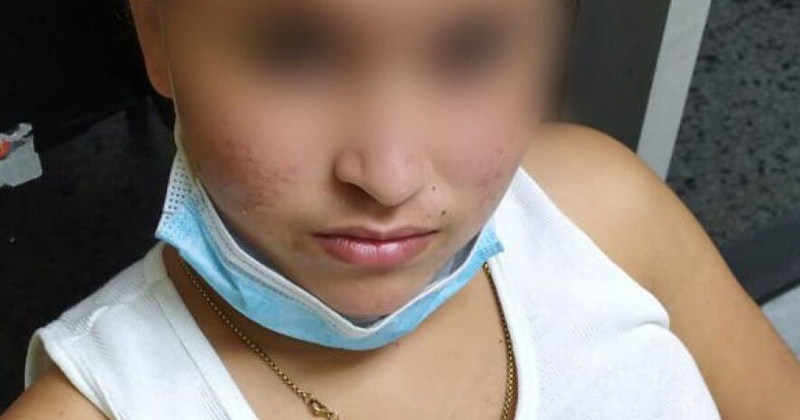With the nationwide rise in human trafficking, including sex trafficking, especially in Southeast Texas, a local nonprofit is educating communities with awareness training on the issue. Since 2014, Harvest House (HH) has been reaching out to schools, civic organizations, groups and churches to connect concerned members of the community with the resources needed to help save the lives of victims forced into circumstances beyond their ability to escape.
The local, faith-based nonprofit aims to end sex trafficking in Southeast Texas through prevention and education programs, advocacy, mentoring and longterm case management for at-risk youth and survivors in Southeast Texas. HH serves Jefferson, Hardin, Orange, Jasper, Newton and Tyler counties and is currently providing services to approximately 40 youth in Southeast Texas, all local residents.
The U.S. State Department estimates that more than 27 million people were victims of human trafficking in 2023 and 4.5 million people are victims of forced sexual exploitation.
According to the 2023 Trafficking in Persons Report from the State Department, 20% of victims of human trafficking are victims of sex trafficking. The report also states that 62% of victims are victims of labor trafficking, 12% are victims of both labor and sex trafficking, and 6% of victims have unknown forms of trafficking.
In 2023, HH served 62 survivors and 16 graduated out of their program, according to the Harvest House Impact Report. It also shows 35% were survivors of sex trafficking.
Educating communities
“We’re educating the community and we are providing direct services to the survivors of trafficking,” explained HH Education Coordinator Brittany DeLaGarza during her presentation of “Trafficking 101” to a gathering of about 40 at Abundant Life of Beaumont this past week.
According to DeLaGarza, on average, HH speakers attend about 50 different awareness events throughout the year; but, this year, the nonprofit has already surpassed the 50-event mark with most of the year remaining.
“The amazing thing we’ve experienced is organizations and churches are reaching out to us and inviting us to come and speak,” DeLaGarza said of a topic that has been off-limits for social settings in the past. HH events actively desensitize the topic of trafficking but, for some organizations, it still serves as too taboo a subject, DeLaGarza noted. However, she said, HH is changing that narrative as they focus on the prevention of trafficking at middle and high schools, where students are taught about healthy boundaries and red flags for trafficking.
“On the other side of that,” she added, “we’re making sure that churches and other organizations know how to recognize trafficking and report trafficking. More people are coming forward and asking questions about potential situations, and from there we can guide them to the right resource, such as law enforcement or the National Human Trafficking Hotline.”
According to DeLaGarza, part of her job is to get everyone “up to speed” on the language HH uses when talking about victims.
“Because ‘victim’ has a certain tone to it, it makes us think that this person is weak or that they are not moving forward,” she explained. “There’s some negative connotation attached to ‘victim’ and so we use the word survivor instead when we talk about our victims because they have survived something... It will never be the same again for them, but they will find peace. They will find healing and we are with them through that entire journey.”
DeLaGarza said education and prevention is important in school districts, within foster care and other systems that educate or work with youth, because of the need to be aware of what trafficking looks like. Even starting education in middle school could be too late, she worries, after several HH employees attended a conference with the National Center for Missing and Exploited Children and engaged in training with FBI agents and police officers to learn about the trends with trafficking.
“One presenter told us we need to start the conversation of safety and safe adults at a very young age, ideally kindergarten,” she added. “Teach them about a safe adult and safe touch.”
DeLaGarza stated young people have vulnerabilities, the same as adults, and can be insecure about their appearance, social status or something going on at home.
“Traffickers are master manipulators at figuring out these vulnerabilities,” she said, urging parents or family members to be uplifting toward young people to help them build healthy boundaries. “This is why we’re here to talk about it and to learn how to continue to get this to our community.”
Trafficking children
DeLaGarza defined child sex trafficking as when someone under the age of 18 has engaged in commercial sex.
“We have many children – and I mean young children – that are living at home and trafficked on the weekend,” DeLaGarza stated. “They are picked up, taken to Lake Charles, and, oftentimes, brought back on the same weekend, and they go to school on Monday.”
Many of the children do not believe that they are being trafficked and will typically think their trafficker is their friend, someone they’re in love with or are going to marry, DeLaGarza shared, as, “There’s a grooming process that happens but, with grooming, the adult in the situation is always the one at fault.”
DeLaGarza noted some youths may not have been able to get services when they were younger and sometimes may have been trafficked for several years before HH can get them identified for services: “It does take quite a process.”
Older statistics show, within Texas, more than 313,000 people are trafficked each year – 79,000 of those are children – and today’s number is expected as much higher. DeLaGarza stated the reason why a lot of youth fall prey is because the trafficker has groomed them and offered them something valuable – money, clothing, shelter, food, basic needs and, sometimes, luxury items. She said traffickers can decipher and figure out what a child needs or is looking for, and thr intended victim sometimes feels like “using their body is the only choice.”
Sex trafficking is not just happening to girls, but boys also – about 15%, according to stats detailed by DeLaGarza.
“Guys are uncomfortable when you’re talking about sex trafficking,” said DeLaGarza. “We want to make sure we are empowering our boys and men to be able to talk about these things.”
According to DeLaGarza, there are four types of sex trafficking: familial, pimp-controlled, gang and survival sex. She noted that parents, fathers, mothers, grandparents and siblings frequently traffic children because they previously experienced trafficking or prostitution when they were young and associate sex with money. With pimp-controlled trafficking, the pimps are controlling multiple victims, according to DeLaGarza, but with gang trafficking, drugs are usually involved and traffickers are tattooing young children to claim them as a brand. She said survival sex is for youths who do not have the resources to survive.
“They are just able to decipher what each child is looking or needing,” DeLaGarza said of the trafficker skill set, which prompts a detrimental choice for children snared in their trap: “Sometimes, they feel it’s their only choice, to offer their bodies.”
What is a trafficker?
DeLaGarza defined a trafficker as a person who buys or sells people or makes money from the work people are forced to do, such as sex work. Traffickers work to appear familiar, develop trust, establish secrecy, erode healthy boundaries and use direct intimidation.
“They want to seem normal because they are trying to entice children and try their best not to look creepy,” she stated, adding that traffickers normally reach out to children ages 12-14, and Interstate 10 is frequently used by traffickers to transport minors. Traffickers are finding most of their victims through social media networks such as Snapchat, Facebook, and others, she divulged.
“Snapchat is the favorite app of a trafficker,” DeLaGarza said. “Youth think those photographs are disappearing. They may be off their phone but many are being saved on servers and can be accessed by law enforcement and many organizations that work in the sex trafficking field.”
DeLaGarza added that traffickers find victims in their neighborhoods, clubs or bars, the internet and schools. The victims are lured through promises of protection, love, adventure, home and opportunities. But traffickers use fear, violence, intimidation and threats to ensure compliance and meet demands, as well.
DeLaGarza stated that, according to the Polaris Project, a nonprofit non-governmental organization that works to combat and prevent sex and labor trafficking in North America, people in sex trafficking situations almost always know and even trust or love their traffickers. She noted the reason a lot of youth are choosing to engage with a certain adult is because they’ve been groomed by the individual.
“Over time, they will establish secrecy, have moments along with that youth where they can continue to groom them,” she explained of the grooming process that can be brief or last several years. “And, then, it’s going to be direct intimidation by the end.”
DeLaGarza said the moment the youth resists the trafficker, that’s when the trafficker will “flip” and, in many cases, threaten the victim or their family. She noted the red flags of trafficking include:
• Sudden appearance of luxury gifts or items
• Evidence of a controlling relationship
• Branding or possessive tattoos
• Older boyfriend or older girlfriend
• Changes in behavior and appearance
• Unexplained injuries and health problems
Escaping trafficking often is not a one-time event, DeLaGarza further detailed, asking for the community to support survivors going through the healing process.
“Many of these kids, it will take 6 or 7 times for them to leave their trafficker,” DeLaGarza said. “There are many things that contribute to why they will not leave. Some are even rescued and then returned to their trafficker.
“We’ll always be here for them if they want to come back and return to services.”
To report suspected trafficking or if someone needs help, call the National Human Trafficking Hotline at 1-888- 373-7888 or text “BeFree” to 233733. If someone is in an immediate danger, call 911.




